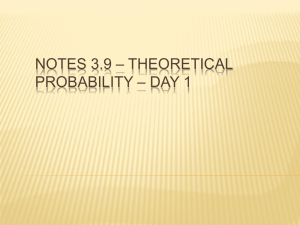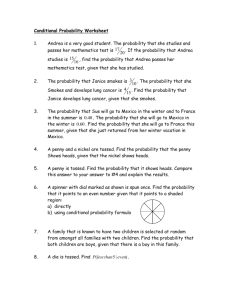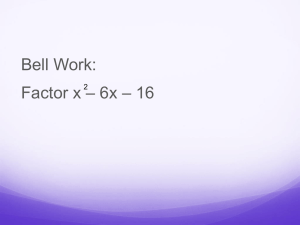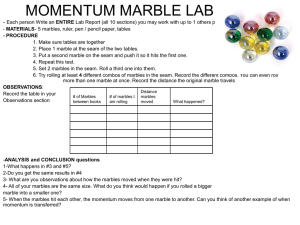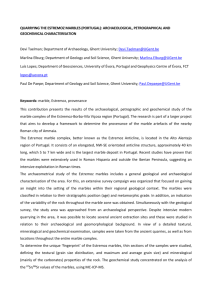Probability Quiz: Test Your Knowledge
advertisement
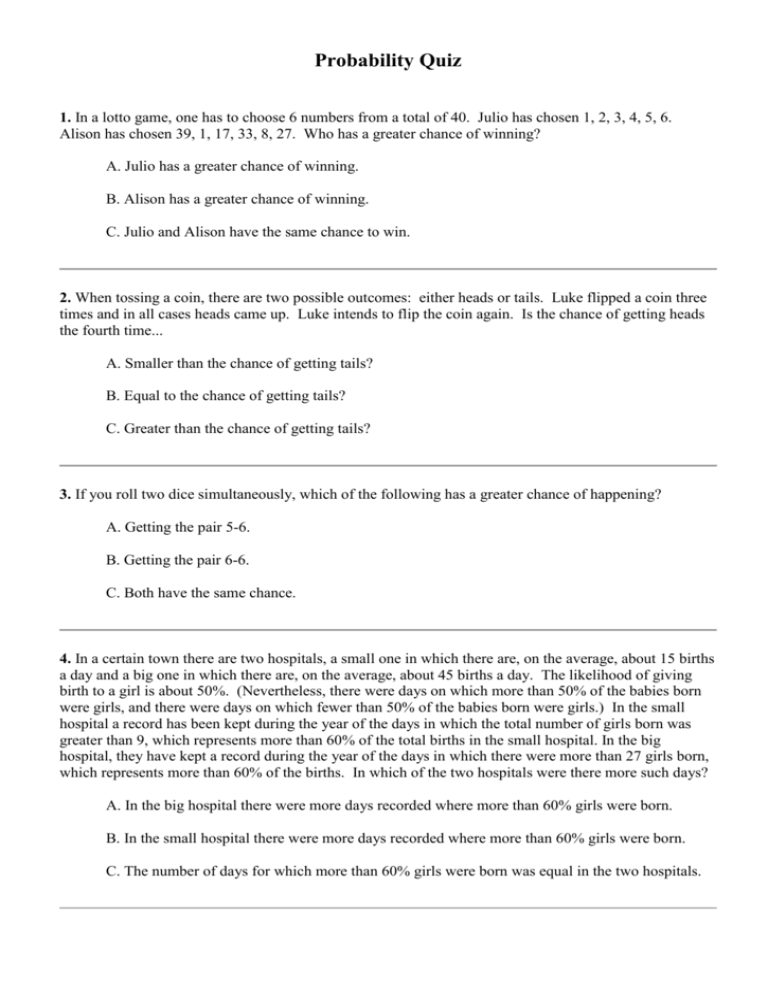
Probability Quiz 1. In a lotto game, one has to choose 6 numbers from a total of 40. Julio has chosen 1, 2, 3, 4, 5, 6. Alison has chosen 39, 1, 17, 33, 8, 27. Who has a greater chance of winning? A. Julio has a greater chance of winning. B. Alison has a greater chance of winning. C. Julio and Alison have the same chance to win. 2. When tossing a coin, there are two possible outcomes: either heads or tails. Luke flipped a coin three times and in all cases heads came up. Luke intends to flip the coin again. Is the chance of getting heads the fourth time... A. Smaller than the chance of getting tails? B. Equal to the chance of getting tails? C. Greater than the chance of getting tails? 3. If you roll two dice simultaneously, which of the following has a greater chance of happening? A. Getting the pair 5-6. B. Getting the pair 6-6. C. Both have the same chance. 4. In a certain town there are two hospitals, a small one in which there are, on the average, about 15 births a day and a big one in which there are, on the average, about 45 births a day. The likelihood of giving birth to a girl is about 50%. (Nevertheless, there were days on which more than 50% of the babies born were girls, and there were days on which fewer than 50% of the babies born were girls.) In the small hospital a record has been kept during the year of the days in which the total number of girls born was greater than 9, which represents more than 60% of the total births in the small hospital. In the big hospital, they have kept a record during the year of the days in which there were more than 27 girls born, which represents more than 60% of the births. In which of the two hospitals were there more such days? A. In the big hospital there were more days recorded where more than 60% girls were born. B. In the small hospital there were more days recorded where more than 60% girls were born. C. The number of days for which more than 60% girls were born was equal in the two hospitals. 5. The likelihood of getting heads at least twice when tossing three coins is... A. Smaller than the likelihood of getting heads at least 200 times out of 300 times. B. Equal to the likelihood of getting heads at least 200 times out of 300 times. C. Greater than the likelihood of getting heads at least 200 times out of 300 times. 6. When choosing a committee composed of 3 members from among 12 candidates the number of possibilities is A. Smaller than the number of possibilities when choosing a committee of 9 members from among 12 candidates. B. Equal to the number of possibilities when choosing a committee of 9 members from among 12 candidates. C. Greater than the number of possibilities when choosing a committee of 9 members from among 12 candidates. 7. Ethan and Gabriella each receive a box containing two white marbles and two black marbles. Ethan extracts a marble from his box and finds out that it is a white one. Without replacing the first marble, he extracts a second marble. Which is more likely? A. Ethan extracts a white marble. B. Ethan extracts a black marble. C. Both have the same chance. 8. Ethan and Gabriella each receive a box containing two white marbles and two black marbles. Gabriella extracts a marble from her box and puts it aside without looking at it. She then extracts a second marble and sees that it is white. Which is more likely? A. The first marble Gabriella extracted was white. B. The first marble Gabriella extracted was black. C. The first marble is equally likely to be white or black. 9. Which is more likely? A. Death by homicide. B. Death by stroke. C. Both have the same chance. Adapted from Fischbein, E., & Schnarch, D. (1997). The evolution with age of probabilistic, intuitively based misconceptions. Journal for Research of Mathematics Education, 28(1), 96-105.
